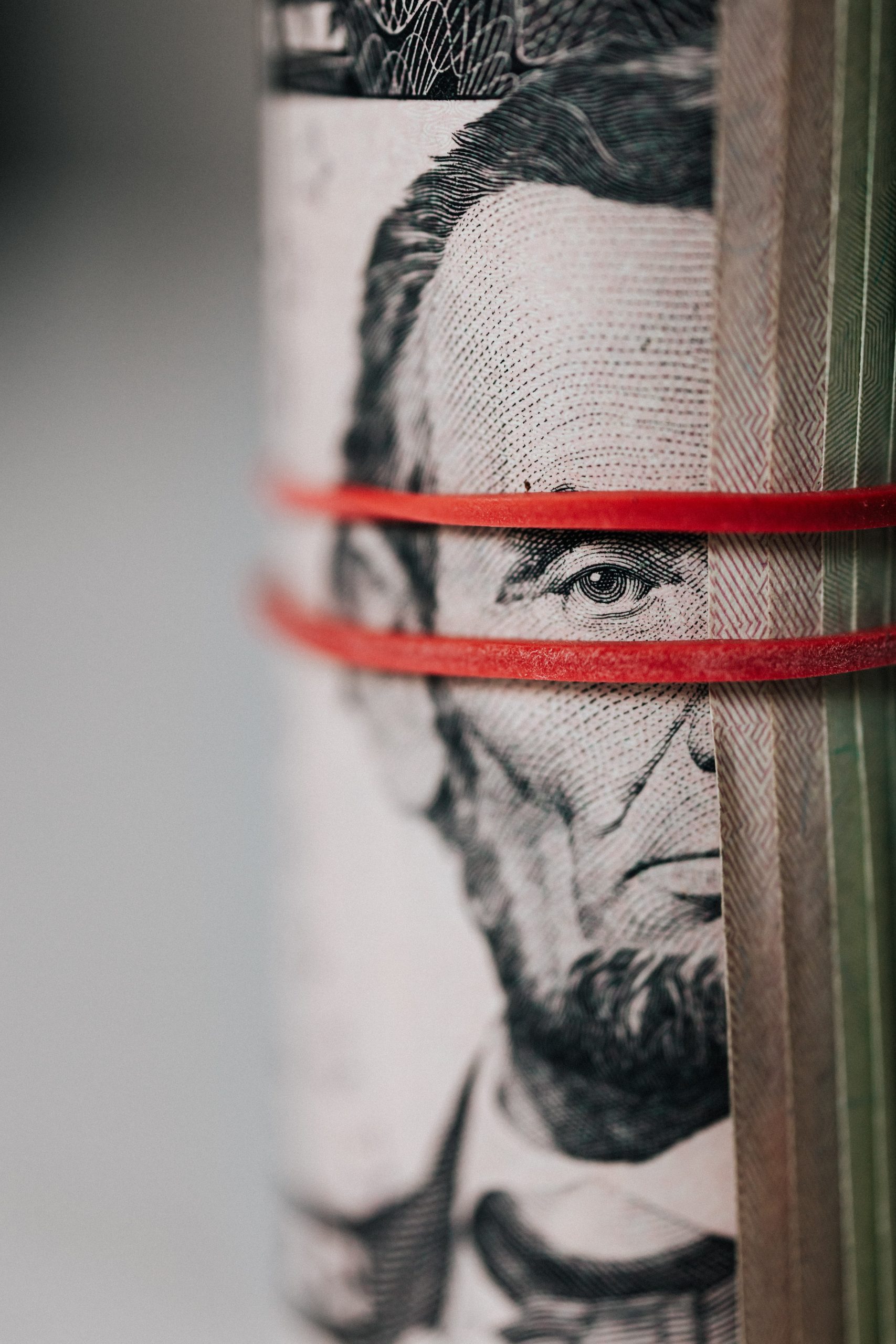If your business has a website, app, or any digital product, you might’ve come across someone trying to convince you to contract UX design services. You—being the cutthroat, business-savvy executive that you are—saw right through them and realized they were selling you snake oil.
So you politely refused.
Well, there’s a little bit more to it than that. Here’s our claim:
“If you don’t partner with a User Experience Design Agency you are cutting into your profits.”
But don’t take our word for it. We’ll let the numbers tell the story.
If It Has a User… It Needs UX Design

Starting from your company’s website all the way up to the ecommerce app that is your bread and butter, your main source of revenue… if it’s digital and has a user, it requires user experience design. Your simple brochure website showcasing your services, the platform through which customers can acquire your products or services, or the mobile app that internally supports your business: all these need to be designed in a way that makes people use them, drives conversion, puts it on a consistent upward trajectory, and lines your coffers with dough.
(We’ll even take that a step further: even if you’re offering a physical service, you need to design that experience—an activity called Service Design—but we’ll leave that convo for another day.)
If It’s Not Snake Oil, What Is It?
Many business people have a vague idea of what UX design is. If you think it’s about the colors or shapes of buttons or the general look and feel of a digital product, you’re kind of missing the big picture.
In a nutshell, UX designers are responsible for creating or overseeing every detail in interacting with a product. Anything that falls under that broad umbrella is game.
The first message they receive upon landing on your app? Check.
The layout of items and info on your web page? Correct.
Which buttons are more prominent in your checkout process? Absolutely.
What happens when a user mouses over, hovers, clicks, or taps on the various objects? Well, you get the picture.
It Doesn’t Seem That Hard!
Ah, yes. The bane of our existence.
In many design endeavors, there are always the people that believe they can do it themselves.
The rationale usually follows one of these thoughts:
- Why pay a lot of money for something that’s basically common sense?
- My developers know all about that.
- If my developers miss something, I’ll be able to catch it!
These assumptions are a bit problematic and, unfortunately, they compound into astronomical costs!
User experience design is a standalone activity, quite distinct from software development. Gone are the days when we thought developers could do everything! Do you let your developers design your user interface, too? No, you hire a designer. The same should apply to UX: Don’t let just anyone do it, delegate it to professionals who’ve dedicated years to acquire the needed skills and knowledge.
Your users, visitors, and customers deserve it.
Ultimately, users ignore designs that ignore them.
Let’s try a little exercise.
This image is from a mobile application form. Can you spot anything wrong with it??

No? Then you need a UX Designer.
Our team spotted at least 5 major problems that could confuse users, affect the form’s completion or collected data, and impact conversion.
It really is a crucial endeavor that directly affects your business. Research shows that 78% of users want to find what they’re looking for within two clicks maximum. And, if it takes more than 3 seconds to load any page, then 79% of your visitors will seek out a competitor.
It takes a lot of research, design efforts, industry knowledge, and know-how to arrive at all these metrics in a succinct design.
You Mentioned an Effect on Profits…?
Yes, we did. As you well know, if it decreases revenues or increases costs, then it’s killing profit. Here’s how bad UX design (or DIY design) is hurting your bottom line.
Lost Opportunity for Higher Price
Price multiplied by the number of units sold basically IS your revenue. But that’s not all:, your price also directly affects the demand customers have for your product. Generally speaking, a higher price means a smaller quantity will be sold, and vice versa.
However, studies conducted on user behavior show that 85% of people would pay extra if their experience is exceptional. That means you get to hack the demand curve, and reset it at a higher value for the same price! If your experience is less than exceptional you just missed the opportunity to cash in on that little “extra”.

Businesses that focus on experience design don’t need to compete on price as much as those who don’t focus on UX. In fact, experts are predicting that customer experience will become the most important brand differentiator in the future. If your customer experience is outstanding, it makes it worth the price you’re charging.
Look at a certain fruit-themed company.
They are on the expensive side of the spectrum but—because the experience is magnificent—people camp outside their stores waiting to empty their wallets on the newest product.
That could be you: You can price higher and people will feel that it’s justified if your experience is amazing.
Lost Revenue
Here’s what your current user experience could be costing you:
- 30% lower sales
- 50% bounce rate
- 70% fewer products sold!
You do the math: this could be the difference between landing the big bucks or filing for bankruptcy. And these aren’t just hypotheticals. Companies that have highly effective UX have managed to increase their revenues by 37%… Are you really going to let that pass you by?
Higher Costs
Some businesses pose the argument that even if they do create something that isn’t 100% satisfying for users, they can quickly fix it without much loss.
The data, unfortunately, speaks otherwise.
User experience errors can cost up to 100x more to fix after development.
This cost includes the man-hours of your developers to redo the work, the opportunity cost of what they could’ve been working on had you gotten it right the first time, and the dip in their morale caused by having to reopen what they thought was closed.
So, yes: having a UX partner lets you keep the shiny-eyed, energetic buzz coursing through your development team and saves you costs that you shouldn’t really have to incur.
More Customer Support = Even Greater Costs!
And then there are the costs you’re incurring until you fix the problem!
One function of user experience designers is to make your digital experience intuitive for users and easy to understand and use. What happens when you skip that part?
- Your experience is hard to understand, so your fickle visitors might give up on it (and on you) = Lost opportunities for revenue generation.
- Those die-hard fans of yours that don’t leave will take longer to reach their targets = Slower conversion and less revenue per unit time.
- When many people don’t understand a feature in your product, they will ask for support in droves = Overburdening your support staff with issues that might not have needed support had you invested in UX design.

Why spend money creating the problem, spend money trying to fix it, and spend money until it’s fixed, when you can invest once in a UX partnership?
Loss of Market Share, Customer Retention, and Loyalty
You might be thinking that we’re skirting into the realm of wishful thinking now… UX Design affecting customer retention and loyalty?
We wish it weren’t true, but here are the numbers. In the studies conducted:
- 90% of users reported that they stopped using an app due to poor performance
- 86% deleted or uninstalled the app when they encountered problems with functionality or design
- 61% will move to another site (your competitors) if they can’t find what they’re looking for right away
- Design-aware businesses have boosted market share by an average of 6.3% solely through design
- Need we go on…?
If this doesn’t spell market share, retention, and loyalty to you, we don’t know what will.
Everyone’s Going Mobile… How Friendly Are You?

Oh, you still haven’t optimized your website for mobile? My, aren’t you behind the times!
Well here’s the thing: users are 5 times more likely to abandon a task if the site isn’t optimized for mobile. How big of a loss is that? Well, given that mobile traffic on the internet has been accounting for almost half of all traffic since 2017, it’s a pretty sizable chunk.
With 67% of customers more likely to purchase on mobile friendly sites, your site not being mobile-friendly is a huge opportunity lost.
And it’s not just about revenues, it reflects directly on your brand.
Eight percent (8%) of users voiced the opinion that a business site not working well on mobile gives an indication that the business simply doesn’t care, an dangerously negative image to project. Fifty two percent (52%) said that bad experiences with mobile sites made them less likely to engage with the business in the future.
Mobile friendliness isn’t a no-brainer: it needs good UX design! And it’s fast becoming a critical determinant of business success.
The Bottom line: UX affects the bottom line!

UX design isn’t an arcane form of sorcery with which designers are trying to hoodwink you. It is a very real, scientific, and highly impactful branch of design. If you ignore it, you do so at your business’s peril.
If you only look at the cost of investing in UX design, you might be missing the cascading effects of NOT investing on your business and your bottom line. By partnering with a UX agency, you’re saving hundreds of thousands in hidden costs down the line AND you’re also giving your business a leg up in terms of pricing and positioning. It’s a no-lose situation.
And please don’t do UX design yourself unless you have the expertise. It’s too critical a factor not to be handled by experts. It’s like attempting to do your own heart surgery.
We really don’t recommend it.









